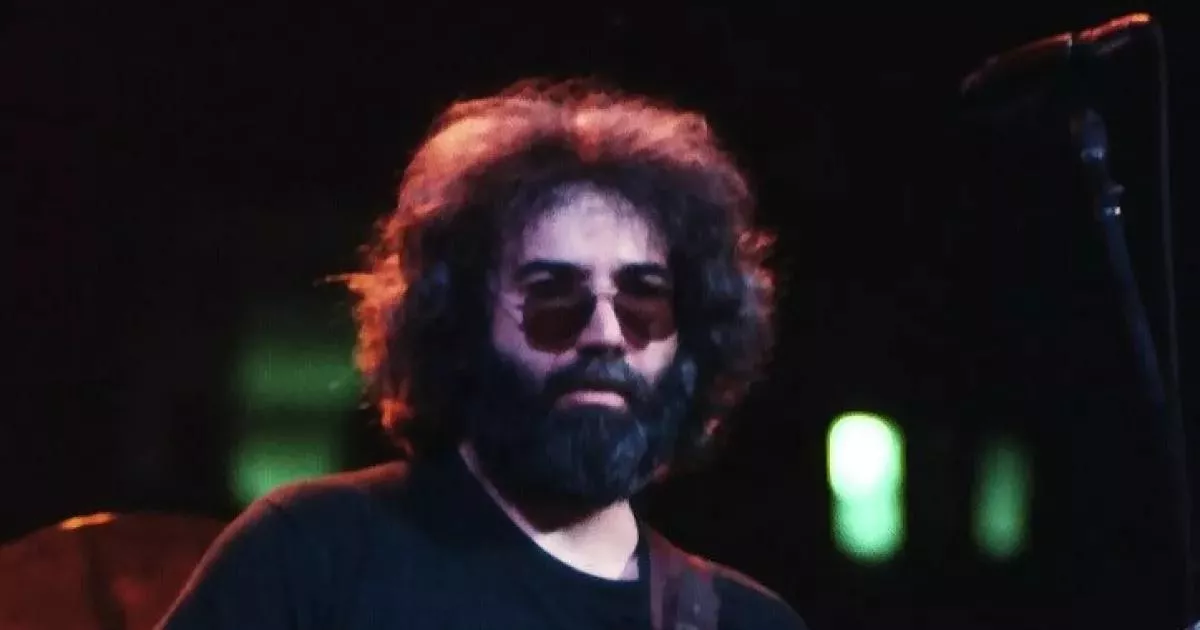From career breakthroughs to professional milestones, explore how Jerry Garcia made an impact.
Jerry Garcia was an American musician, best known as the lead guitarist and vocalist for the Grateful Dead, a band he co-founded and that became a symbol of the 1960s counterculture. Though he resisted the title, Garcia was widely regarded as the band's leader. He was inducted into the Rock and Roll Hall of Fame in 1994 as a member of the Grateful Dead, solidifying his legacy as a pivotal figure in rock music history.
1955: Acquisition of 1955 Stratocaster
In May of 1971, Jerry Garcia began using a 1955 natural finish Stratocaster that had been given to him by Graham Nash in 1969.
April 1961: Garcia Met Robert Hunter
In April 1961, Jerry Garcia first met Robert Hunter, who would become a long-time friend of and lyricist for the Grateful Dead. Garcia performed his first concert with Hunter, each earning five dollars.
1962: Garcia Sang and Performed Bluegrass, Old-Time, and Folk Music
Between 1962 and 1964, Jerry Garcia sang and performed mainly bluegrass, old-time, and folk music.
1962: Garcia Met Phil Lesh and Recorded KPFA Special
In 1962, Jerry Garcia met Phil Lesh, the eventual bassist of the Grateful Dead. They recorded "Matty Groves" and "The Long Black Veil", among several other tunes. The recordings became a central feature of a 90-minute KPFA special broadcast, "The Long Black Veil and Other Ballads: An Evening with Jerry Garcia".
1963: Garcia Teaches Bob Matthews and Meets Bob Weir
In 1963, Bob Matthews introduced Bob Weir and Jerry Garcia on New Year's Eve. One of Garcia's students was Bob Matthews, who later engineered many of the Grateful Dead's albums.
1965: Start of Grateful Dead's Constant Touring
From their formation in 1965, Jerry Garcia and the Grateful Dead toured almost constantly.
1965: Start of Garcia's 30-year career with Grateful Dead
In 1965, Jerry Garcia began his 30-year career with the Grateful Dead, a band he co-founded.
1965: Mother McCree's Uptown Jug Champions Evolved into the Warlocks and then Grateful Dead
In 1965, Mother McCree's Uptown Jug Champions evolved into the Warlocks, with the addition of Dana Morgan, Jr. (soon replaced by Phil Lesh) on bass guitar and Bill Kreutzmann on percussion. However, the band discovered a record by another group (possibly the future Velvet Underground or Z.Z. Top, both of which used the name in their early days) called The Warlocks. In response, Garcia came up with "Grateful Dead" by opening a Funk & Wagnalls dictionary to an entry for "Grateful dead".
1965: Use of Guild Starfire
In 1965, while playing with the Warlocks, Jerry Garcia used a Guild Starfire guitar, which he also used on the debut album of the Grateful Dead.
1967: Use of Gibson Les Paul Guitars
Beginning in late 1967, Jerry Garcia played black or gold mid-1950s Gibson Les Paul guitars with P-90 pickups.
1967: Garcia as 'spiritual advisor' for Jefferson Airplane's Surrealistic Pillow
In mid-1967, Jerry Garcia was listed as the "spiritual advisor" for Jefferson Airplane's album, Surrealistic Pillow. Garcia played the high lead on "Today," and also played on "Plastic Fantastic Lover" and "Comin' Back to Me" on that album.
1968: Use of Gibson Les Paul Guitars
Jerry Garcia continued to play black or gold mid-1950s Gibson Les Paul guitars with P-90 pickups in 1968.
1969: Start of Pedal Steel Flirtation
Around 1969, Jerry Garcia began his "pedal steel flirtation period," initially playing a Fender instrument.
1969: Joined New Riders of the Purple Sage
In 1969, Jerry Garcia began playing pedal steel guitar for fellow-San Francisco musicians New Riders of the Purple Sage from their initial dates.
1969: Adoption of Gibson SG and Fender Stratocaster
In 1969, Jerry Garcia picked up the Gibson SG and used it for most of the year and 1970, except for a short period where he used a sunburst Fender Stratocaster.
1969: Pedal Steel on Jefferson Airplane's Volunteers
In 1969, Jerry Garcia played pedal steel on the track "The Farm" on the Jefferson Airplane album 'Volunteers', and the track "Oh Mommy" by Brewer and Shipley.
1970: Contributed to Brewer & Shipley's album Tarkio
In 1970, Jerry Garcia contributed pedal steel guitar to Brewer & Shipley's album Tarkio.
1970: Participation in the Zabriskie Point soundtrack
In 1970, Jerry Garcia participated in the soundtrack for the film Zabriskie Point.
1970: Pedal Steel on Crosby, Stills, Nash & Young's Déjà Vu
In 1970, Jerry Garcia played pedal steel on the hit single "Teach Your Children" by Crosby, Stills, Nash & Young from their album 'Déjà Vu'.
1970: Use of Gibson SG
In 1970, Jerry Garcia primarily used the Gibson SG, except for a small period where he used a sunburst Fender Stratocaster.
April 1971: Appearance at Fillmore East with Emmons D-10
In April 1971, Jerry Garcia employed an Emmons D-10 at the Grateful Dead's and New Riders of the Purple Sage's final appearances at the Fillmore East.
April 1971: Playing the Peanut guitar
In March and April 1971, Jerry Garcia played the "Peanut" guitar during the recording of the Grateful Dead's second live album, Grateful Dead.
1972: Purchase of Alembic Guitar
In late 1972, Jerry Garcia purchased the first guitar made by Alembic luthier Doug Irwin for $850.
1972: Brief Reversion to Sunburst Stratocaster
In the summer of 1972, while Alligator was in the shop, Jerry Garcia briefly reverted to the sunburst Stratocaster. This can be seen in Sunshine Daydream.
1972: End of Pedal Steel Flirtation
Jerry Garcia's "pedal steel flirtation period" ended around 1972.
May 1973: Delivery of Wolf Guitar
In May 1973, Jerry Garcia received the "Wolf" guitar from Doug Irwin, replacing Alligator on stage in September.
August 1973: End of Alligator Use
The "Alligator", a Stratocaster with an alligator sticker added in the fall of 1971, remained Jerry Garcia's principal electric guitar until August 1973.
1973: Use of McIntosh MC 2300 Amplifier
In 1973, Jerry Garcia began using a specific McIntosh MC 2300 amplifier.
1974: Wolf Dropped During European Tour
During the Grateful Dead's 1974 European tour, the "Wolf" guitar was dropped on several occasions, causing a minor crack in the headstock.
1974: Produced Home, Home on the Road for New Riders of the Purple Sage
In 1974, Jerry Garcia produced the live album Home, Home on the Road by New Riders of the Purple Sage.
1974: Budweiser Budman Sticker on Amplifier
In 1974, Jerry Garcia's McIntosh MC 2300 amplifier was christened with a Budweiser Budman sticker, making it a unique identifier.
1975: Playing Travis Bean Guitars
In 1975, Jerry Garcia played several Travis Bean guitars, including the TB1000A.
1976: Playing Travis Bean Guitars
From 1976 to 1977, Jerry Garcia played several Travis Bean guitars, including the TB500.
September 28, 1977: Return of Refurbished Wolf Guitar
On September 28, 1977, Irwin delivered the refurbished "Wolf" guitar back to Jerry Garcia. The wolf sticker was now inlaid into the instrument and featured an effects loop.
1978: Deterioration of Band Chemistry
By 1978, the Grateful Dead's chemistry began "cracking and crumbling" due to drug and alcohol abuse, leading to poor group cohesion.
February 1979: Departure of Keith and Donna Jean Godchaux
In February 1979, Keith and Donna Jean Godchaux left the Grateful Dead because the band's chemistry had begun to deteriorate.
August 4, 1979: First concert use of "Tiger" guitar
On August 4, 1979, Jerry Garcia first played his custom guitar "Tiger" in concert with the Grateful Dead at the Oakland Auditorium Arena. The guitar was named for the tiger inlay on the preamp cover.
January 1985: Intervention and Arrest for Drug Possession
In January 1985, Jerry Garcia's bandmates held an intervention due to his decade-long heroin addiction. On January 19, 1985, before starting a rehabilitation program, Garcia was arrested for drug possession in Golden Gate Park.
1986: Diabetic Coma throwback
After returning from the band's 1992 summer tour, Garcia became sick, a throwback to his diabetic coma in 1986.
1987: Return to pedal steel guitar with Bob Dylan
After a long lapse from playing the pedal steel, Jerry Garcia played it once more during several of the Dead's concerts with Bob Dylan in the summer of 1987.
1987: Release of 'In the Dark' and Band Revival
In 1987, after Jerry Garcia's recovery, the Grateful Dead released 'In the Dark', which became their best-selling studio album. The band's energy and chemistry reached a new peak due to Garcia's improved health.
1988: Appearance on Ornette Coleman's album Virgin Beauty
In 1988, Jerry Garcia appeared on saxophonist Ornette Coleman's album, "Virgin Beauty".
1988: Performance at the "Soviet American Peace Walk" concert
In 1988, Jerry Garcia performed at several major benefits, including the "Soviet American Peace Walk" concert in San Francisco, drawing 25,000 people. He also played at a benefit for Vietnam Veteran Brian Willson.
1989: Representation by the Weir Gallery
From 1989 Jerry Garcia's artistic endeavors were represented by the Weir Gallery in Berkeley, California.
July 1990: Brent Mydland's Death
In July 1990, Brent Mydland died of a speedball overdose, deeply affecting Jerry Garcia, who believed the band's chemistry would never be the same.
1990: Irwin completes "Rosebud"
In 1990, Doug Irwin completed "Rosebud", Jerry Garcia's fourth custom guitar, featuring different inlays and electronics from "Tiger". Rosebud had three humbuckers, a Roland GK-2 pickup, and was used with a Roland GR-50 rack mount synthesizer and a Korg M1R synthesizer during live performances.
1990: First solo art show
In 1990, Roberta Weir sponsored Jerry Garcia's first solo art show at the Weir Gallery in Berkeley, California.
1991: Concerns About Band's Future and Relapse
In 1991, Jerry Garcia was concerned with the Grateful Dead's future due to exhaustion from touring. He relapsed into heroin use, prompting another intervention from the band.
1993: Replacement of Budman Amplifier
In 1993, Jerry Garcia's "Budman" amp, which was one of the only components from the Wall of Sound to remain in use, was replaced with a cab simulation system.
1993: Cripe gifts "Lightning Bolt" guitar
In 1993, Stephen Cripe gifted Jerry Garcia the "Lightning Bolt" guitar, named for its inlay. Garcia began using the guitar exclusively and hired Gary Brawer to reconfigure the pickups and make it MIDI-compatible.
1993: Garcia Interview with Rolling Stone
In a 1993 interview with Rolling Stone, Jerry Garcia noted that his own preferences are for improvisation, for making it up as he goes along.
1994: Induction into the Rock and Roll Hall of Fame
In 1994, Jerry Garcia was inducted into the Rock and Roll Hall of Fame as a member of the Grateful Dead.
April 1995: Cripe delivers "Top Hat" guitar
In April 1995, Stephen Cripe delivered the backup guitar "Top Hat" to Jerry Garcia, who bought it for $6,500. However, Garcia rarely used it, preferring the "Lightning Bolt" guitar.
1995: Last studio collaboration on Sanjay Mishra's Blue Incantation
In 1995, Jerry Garcia played on three tracks for the CD Blue Incantation by guitarist Sanjay Mishra, marking his last studio collaboration.
1995: End of Garcia's 30-year career with Grateful Dead
In 1995, Jerry Garcia's 30-year career with the Grateful Dead came to an end.
1995: End of Grateful Dead's Constant Touring
Jerry Garcia and the band toured almost constantly from their formation in 1965 until Garcia's death in 1995.
1996: End of representation by the Weir Gallery
In 1996, Jerry Garcia's artistic endeavors ended their representation by the Weir Gallery in Berkeley, California.
2015: The Jerry Garcia Foundation launched
In 2015, Jerry Garcia's wife, Manasha Garcia, and their daughter, Keelin Garcia, launched The Jerry Garcia Foundation, a nonprofit charity that supports projects for artistic, environmental, and humanitarian causes.
May 2017: Auction of Wolf guitar for charity
In May 2017, the Wolf guitar was auctioned again, this time for charity. Daniel Pritzker donated all proceeds to the Southern Poverty Law Center. Brian Halligan placed the winning bid totaling $1.9 million.
2018: Jerry Garcia Music Arts label launched
In 2018, Jerry Garcia's family members, Keelin Garcia and Manasha Garcia launched the Jerry Garcia Music Arts independent music label.
Mentioned in this timeline
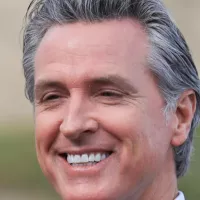
Gavin Newsom is an American politician and businessman currently serving...
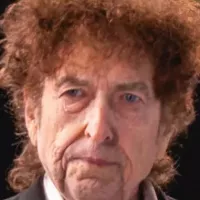
Bob Dylan is a highly influential American singer-songwriter renowned as...
California is a U S state on the Pacific Coast...
Apple TV is a digital media player and microconsole by...
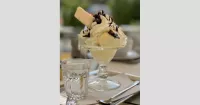
Ice cream is a frozen dessert primarily composed of milk...
India officially the Republic of India is a South Asian...
Trending
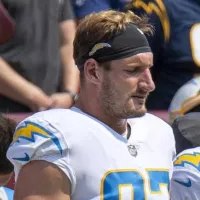
2 months ago Joey Bosa Lists Los Angeles Mansion for $3.7 Million Amid Bills Transition.
1 month ago Cowboys Defeat Eagles; Sirianni Disputes Barkley; Lurie Scrutinizes Coaching Staff After Loss
2 months ago Eagles Acquire Jaelan Phillips in Trade; Patriots Expressed Interest Before Deadline.

7 months ago Eagles' Saquon Barkley & Cooper DeJean Showcase Basketball Skills in Viral Moment
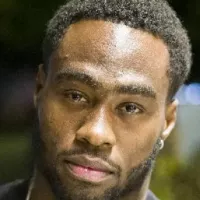
28 days ago Brandin Cooks joins Bills; WR Moore released after guaranteed $2.5 million contract.

7 months ago Mikaela Shiffrin Releases Final Episode of "Moving Right Along" Web Series
Popular

XXXTentacion born Jahseh Dwayne Ricardo Onfroy was a controversial yet...

Stranger Things created by the Duffer Brothers is a popular...
The Kennedy Center Honors are annual awards recognizing individuals and...
Turning Point USA TPUSA is an American nonprofit organization founded...

Candace Owens is an American conservative political commentator and author...

Bernie Sanders is a prominent American politician currently serving as...
